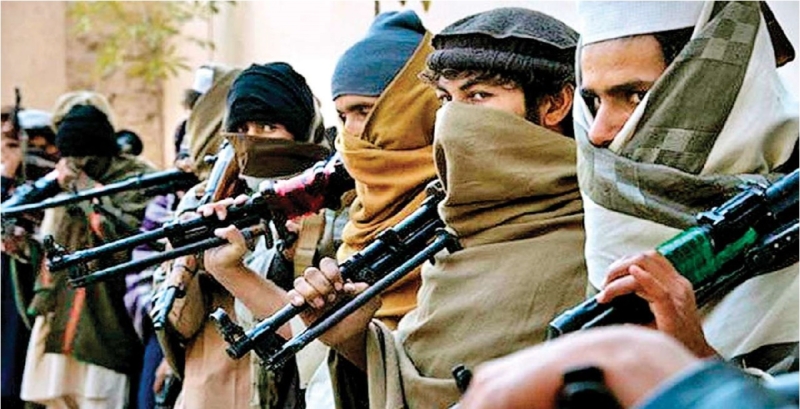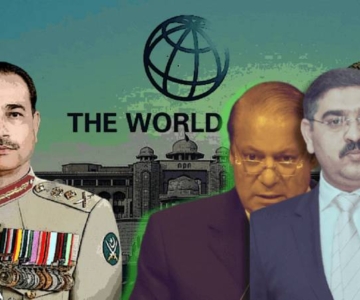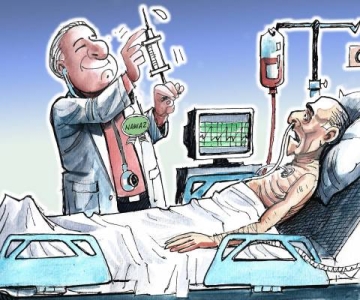Pakistan needs to undertake research on militancy for effective policymaking
A recent attempt to understand militancy, “Poverty and Support for Militant Politics: Evidence from Pakistan” (Graeme Blair, C. Christine Fair, Neil Malhotra, Jacob N. Shapiro, 2011), provides us fresh insights into the phenomenon or myth of popular support for militant extremism in Pakistan. Using a sample of urban and rural population and employing inventive techniques, this research is an important document if only Pakistan’s policymakers would ever pay attention to the little evidence that is generated with respect to militancy. It is a sad state of affairs that our national policy institutes and ‘think-tanks’ are yet to undertake such studies even when the state and its agencies have been brutally attacked and over 35,000 Pakistanis have died due to terrorism during the last decade. By no means does this survey provide a definitive account of what is happening in the country. However, in the absence of any other study, its findings are most useful to debate how extremism is taking root in the society.
The survey measured public attitudes towards four important militant groups: Al-Qaeda, the Afghan Taliban, Kashmiri groups (Lashkar-e-Tayyaba, Jaish-e-Muhammad among others) and sectarian groups such as Lashkar-e-Jhangvi and Sipah-e-Sahaba. Contrary to conventional wisdom, the study concludes that the survey participants “were generally negatively inclined toward all four militant organizations” and reinforced what many analysts have said often: “Pakistanis do not have a taste for militants”. However, participants differentiated between the groups. They were more inclined to believe that Kashmiri groups provided public goods like health services, etc., and were much more likely to say that they were fighting for a good cause. Secondly, Pakistanis living in violent parts of the country, e.g. Khyber-Pakhtunkhwa (KPK), strongly disliked these groups probably because they pay a higher price for their actions.
Most significantly, the third finding of the study was that poor Pakistanis disliked these groups almost twice as much as middle class Pakistanis. In fact, the authors concluded that middle class Pakistanis were ‘mildly positive’ toward militants. A reasonable explanation for this finding was that militant groups are more likely to strike in bazaars and mosques – places that the poor frequent more but also because these groups pose more of an economic threat to the poor, whose losses from attacks are proportionately greater than those of the more affluent sections of society.
The final conclusion relates to the strongest dislike for militant organisations among poor urban residents. The negative relationship between poverty and support for militancy is three times stronger in urban Pakistan than in the country as a whole. This finding reinforces the idea that aversion to militants is driven by greater exposure to their attacks, which are concentrated in urban areas. The study, therefore, busts the myth that support for militancy is related to individuals’ socioeconomic status, especially poverty, and calls for ‘substantial revision’ of the international aid (especially coming from the United States) policy which predicates itself on poverty as the key driver of support for extremism.
This study could not have come at a more opportune time. Pakistan in the past few years has witnessed an exceptionally high level of tolerance for extremism among the middle class, which staffs Urdu media and provides intellectual direction to public opinion. Urdu newspapers glorify militant groups as the agents of local and global ‘jihad’ and are steeped in the jihadist discourse that emanated from Pakistan’s concerted alliance with the US in 1980s to nurture Mujahideen and later efforts to seek ‘strategic depth’ in Afghanistan and ‘fix’ India via proactive jihadism. Little has changed in the past three decades except the fact that a grander version of Urdu press now exists in the shape of electronic media. The latter, barring few exceptions, has also overtly and covertly supported soft-Islamism as a natural policy option for an Islamic Republic endowed with nuclear weapons.
However, this worldview did not come into being in a few years. Pakistan’s history and its issues of identity have haunted the state right from its inception. From the 1949 Objectives Resolution to Zulfikar Ali Bhutto’s Islamisation efforts, most notably getting the Parliament to declare one sect as ‘non-Muslim’ in 1974, Islamism has been a strong narrative, though with little electoral basis or mass appeal. However, Ziaul Haq used the well-organised Jamaat-e-Islami and powerful mullahs from other Islamist groups to engineer ‘intellectual’ support for a long dictatorship in the name of Islam. His rule also supported sectarian organisations, especially those propagating a Saudi-Wahabi version of Islam with ample financing from the Middle East that continues to date.
By the late 1980s, ‘defeat’ of India and ‘control’ over Afghanistan were seen as legitimate goals of Pakistan’s jihad industry. During the 1980s, the education system also reflected these goals: there is credible evidence now cited in various papers and books which demonstrates how the central ministry of education was tasked to indoctrinate young minds in public schools and train a crop of jihadis through a specially financed and protected madrassa network outside the formal schooling system. Three generations have been fed with this ideological diet and, therefore, an eager audience for Islamist discourses exists in Pakistan.
The civil-military bureaucracy recruits its officers from the Pakistani middle class (whichever way one defines it). A large number of fresh entrants to the ‘system’, therefore, come with an education that is conducive to the continuation of militarism and jihadism in pursuit of Pakistan’s destiny as a nuclear Islamic fortress beset by foreign conspiracies. The so-called ‘non-state’ actors or sections of civil society, which provide justification to military ascendancy, reinforce this ‘mindset’. In particular, the unilateral and narrow interpretation of jihad thus becomes a ‘truth’ in itself, thereby allowing the justifications or even support for militant groups for the attainment of Pakistan’s global ‘importance’. Whilst we are seriously short of empirical evidence of civil servants’ attitudes, the retired officers who write and speak in the public domain testify to the unfortunate trend.
For instance, former chiefs of the Inter Services Intelligence (ISI) openly argue how important the militant groups are for Pakistan’s strategic leverage and ability to bargain with the United States and the West. The retired Ambassadors, save a few exceptions, regurgitate the unimaginative India policy and indirectly (sometimes more directly) justify how the militant groups such as Lashkar-e-Tayyaba are important to our policy goals. A new crop of TV anchors, reporters and producers also educated in Pakistani schools and colleges allow for this space to grow; and the handful of naysayers or ‘independent’ thinkers are either not given space or drowned in the shrill of apologia for terrorism.
Another cultivated opinion on the Pashtuns’ affinity for militant groups has been busted by the survey mentioned above. Fro years, the mainstream media and rogue analysts were citing the US presence in Afghanistan and the emergence of Pashtun nationalism as the reasons for the romantic anti-US struggle through militant groups operating under the banner of Tehreek-e-Taliban Pakistan (TTP). It was only when terrorism spread beyond KPK that Punjab and Balochsitan came under media spotlight. The seminaries operating in the Punjab have grown in size, strength, resources and outreach.
A recent report entitled, “Madrassahs fanning radicalism” was reportedly forwarded by the Punjab Home Department to the Punjab Inspector General of Police and other senior police officers, including divisional commissioners, urging regulation of mainstream madrassas “to ensure protection of civil society from radicalisation and sectarian polarization”. (“Intelligence report: Punjab seminaries fanning radicalism identified”). The seminaries named in the report include Madarassa Usman-o-Ali in Bahawalpur, Al-Noor Markaz Muridkey Goraya in Sialkot,Madrassa Darul Uloom Khatijatul Qubra Lil Banat in Multan, among others.
Therefore, the rise of extremism is no longer a localised issue. The obvious inability of the Punjab government to take on the militant organisations also reflects how the state may be becoming weaker in confronting these organisations. Most certainly, the support for militant organisations in KPK is, therefore, not the root cause of the rise of radical seminaries. The deep state and its policy of allowing extremist ideologies to flourish and accept Gulf sources of financing may be the actual issues of concern. Any counter-terrorism strategy ignoring these vital links is likely to fail.
The only way Pakistan can begin to alter the discourse on militancy, jihad and the rising tide of Islamism is through a consensus among the stakeholders of the democratic system. Despite several initiatives such a consensus is lacking. A common agreement among the civilian stakeholders will be essential to move towards a strategy to address militancy. The major opposition party and a formidable representative of the Punjab needs to take a clear position and should not play politics of expediency by suggesting that TTP and its agenda is common and that Punjab province should be left alone. Thus far, Imran Khan has been apologetic about the Taliban and has indulged in populist anti-US rhetoric. Khan would be well-advised to read and imbibe the major findings of the survey cited above.
Finally, the international community especially the United States should revise its agenda for Pakistan’s ‘development’, which currently is a strategic extension of the war on terror. Poverty reduction ought to be the overarching goal but more needs to be done with the education system, madrassa reform and media regulation. Pakistan needs to undertake more research and update its sources of data on militancy for effective policymaking and providing the right direction to international aid. Otherwise, we may end up repeating our past trajectory of getting too much aid with little or no results.
First published in The News on Sunday (August 7, 2011)



